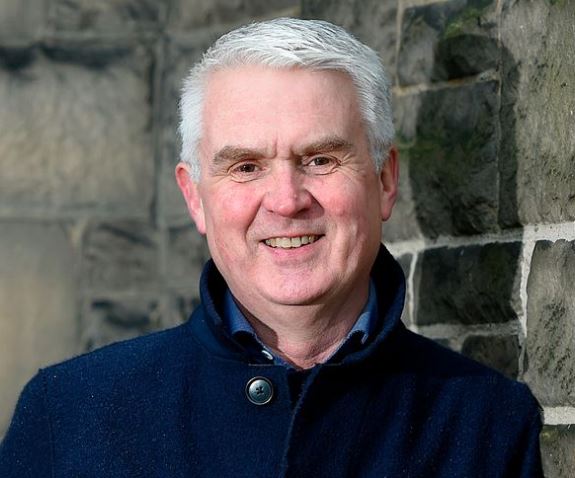 ‘What one can see is the present, the dimension of landscape which is in front of us now. But now is shaped by the past, backed by it, as it were, the way the glass of a mirror is backed by silver; it’s what lies behind the present that gives it its color and sheen. And now is always giving way, always becoming.’
‘What one can see is the present, the dimension of landscape which is in front of us now. But now is shaped by the past, backed by it, as it were, the way the glass of a mirror is backed by silver; it’s what lies behind the present that gives it its color and sheen. And now is always giving way, always becoming.’
Mark Doty, Heaven’s Coast
It’s World AIDS Day again and I want to tell you a story of hope. About how HIV has changed. And of what we can achieve in Scotland in a few short years — if we have the will.
But to make the urgency of that story real I need first to go back in time and place. Because this is personal.
In the beginning there was FEAR.
Existential fear of an unknown killer in our midst. A killer that seemed light years away from the small northern city in England where I was studying. The ‘rare cancer found in homosexuals’ in New York and California, reported in July 1981.
But then it stalked closer. The death of Terry Higgins in July 1982, the very month I arrived in London at the age of 21. Out, sometimes proud but always radical.
In those days, news travelled slowly and came in whispers. Until one day it tapped you on the shoulder. Someone you knew had taken his life for the fear of the thing. And then finally it stared you in the face. Up close and personal.
For me that day came in September 1985 when just a few weeks into our relationship my late partner, Lawrence, told me he was positive. By then the killer had a name — HTLV3 — soon after known as HIV. I told him it was okay. Love had come knocking and I couldn’t turn it away.
Perhaps I have told the story of his untimely death at 37 just ten years later too much. But what is remembered lives on. Even though he could not. And ‘just ten’ was far more than we dared hope for.
And even as we lost lives, we built them too. Looking fear in the eye was a form of resistance. Not just on the streets but in the banality of everyday life. Where beating the virus seemed an impossibility, defying it was an imperative.
Yet riven through that daily defiance there was fear. His of dying, mine of losing him and of the virus. I had tested negative soon after he broke the news. But routine vigilance for symptoms — skin blotches, swollen glands — became a way of life. Even — as I read Paul Monette’s Borrowed Time in the dead of night over Christmas 1988 — the apparent disappearance of the lunula in my fingernails.
And even in the throes of love, my fear contributed to a tension which came between us. Not because I feared contracting the virus from him. But because the virus hadn’t got me — while for him there was no going back and my anxiety felt like a luxury.
Like the evening in Greenwich Village in the spring of 1989 when giddy laughter turned to hot tears in short order. Suddenly there we were rain soaked in the middle of the street screaming at one another, each of us locked in our own rage at the sheer injustice of it all.
Fast forward nearly four decades to earlier this summer, and in conversation with a leading light in the world of HIV I made a shocking admission. Despite all the progress we have made, despite everything I knew then and know now, the fear that HIV wrought — including the trauma of testing – has never really left me.
A friend asked me not so long ago how I dodged the virus in those days. The truthful answer to that question is as much about luck as care. Fear does not eliminate risk taking. But the idea that I could have survived only to contract the virus in later life has filled me with dread — not so much of HIV itself but of the shame it would bring.
In one sense mine is a deeply personal story — and a pretty messy one too. But in another it comes down to something else which has loomed large since those early days.
That would be STIGMA.
I overheard a story in a gallery just last month about a man who had left his wife after coming out back then. He had ‘gone on the rampage and died of AIDS’ the storyteller boomed out to his friends as my husband and I listened on.
I wanted to intervene and explain that I knew to the cost of those I had loved and lost that wasn’t how it happened. And that what had really been on the rampage was stigma.
To tell him that for all the astonishing medical progress born out of resistance and exploration, activism and science, appalling levels of stigma persist. But we walked away quietly leaving him to his ignorance.
Here in Scotland, new Scottish Government funded research from YouGov has revealed shockingly that just one third of people would be happy to kiss someone living with HIV, despite it being known since the 1980s that HIV can’t be passed on through saliva.
And still just a third of Scots are aware that people living on effective treatment can’t pass the virus on. Small wonder that almost half (46%) of those living with HIV in Scotland would be ashamed to tell people they were HIV positive.
It is timely then that a film informed by that research and produced by the Terence Higgins Trust hit our TV screens in October, the first such advert on national television since the tombstones of 1987. Then the message was of a deadly disease that had no known cure.
Given the passage of time, today’s message it is almost more shocking, yet just as true — Stigma is more harmful than HIV itself.
The stark truth is that stigma was always the bogeyman. Two years before Lawrence died, my friend Tim died alone in his bed of Pneumocystis pneumonia (PCP). He had not told a soul what he must have known, even me. I will never reconcile the cost of that silence. His and mine.
Though the odds were stacked against him, had stigma not stood in his path Tim could have survived that bout of PCP. He could even have been alive today.
But because of the extraordinary legacy of those who found themselves on the frontline, today the odds are stacked in our favour.
Why?
Because if you are positive, you can live a healthy and happy life thanks to combination therapy. The ‘miracle pill’ arrived just a year after Lawrence died in 1995, the peak year for AIDS deaths in the UK — it was darkest before the dawn. And if you are negative, you can protect yourself and others by using PrEP and getting tested regularly.
All of which brings me back to HOPE.
Like the miracle pill itself, there is no one silver bullet. Rather it is a combination of advocacy and action that can, if we have the will, eradicate stigma and transmission by 2030.
HIV does not discriminate — for all the toll it took on gay men it was never a gay disease. In Scotland, intravenous drug users were among the first to be affected in the 1980s. And in 2022 heterosexual HIV diagnoses overtook those in gay and bisexual men for the first time since 2007, in part related to the take up of PrEP.
The UNAIDS theme of World AIDS Day this year is Let Communities Lead. And let them lead we must. The expertise and lived experience that HIV organisations like Waverley Care and the Terence Higgins Trust can bring is indispensable. HIV has long left those most marginalised in society at greatest risk — and their voices must be heard.
But unless that leadership is backed by government action and resource, it cannot succeed.
The Scottish Government will shortly publish a new HIV Transmission Elimination Delivery Plan. Trailing its publication in parliament this week, Jenny Minto, Scotland’s Public Health Minister announced a commitment to pilot opt out blood borne virus testing at three A&E departments in Scotland. And in a week which saw new research published about its effectiveness, her statement also referenced plans to explore expanding PrEP access to primary care.
None of these things will work alone. Engaging those already diagnosed in effective care and reaching the undiagnosed is critical. And if we improve data collection, extend community prevention, ramp up testing and continue to combat stigma, we can succeed.
Scotland can — and should — be the first country in the world to eliminate new transmissions of HIV. But this is not a one day a year promise. It is an everyday of the year slog. Our focus must be relentless.
The opportunity cost is too great to let realistic ambition slip through our fingers. The prize at stake could yet be one of our greatest public health achievements.
Photo by sergey mikheev on Unsplash
